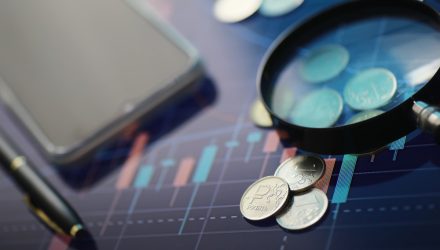Not all low volatility ETFs are alike and while the factor is beloved, it can use some refreshing, which is available via the FlexShares US Quality Low Volatility Index Fund (NYSE: QLV).
QLV follows the Northern Trust US Quality Low Volatility Index. The ETF’s benchmark employs a quality screen to provide exposure to high-quality companies with lower absolute risk, thereby limiting potential future volatility. The quality screen analyzes a broad universe of equities based on key indicators such as profitability, management efficiency, and cash flow, and then excludes the bottom 20% of stocks with the lowest quality score. The index is then subject to the regional, sector, and risk-factor constraints, in order to manage unintended style factor exposures, significant sector concentration, and high turnover.
“Low-volatility exchange-traded funds aim to give investors a smoother ride in stock markets,” said Ben Johnson of Morningstar in a recent note. “Being long stocks with less risk is a compelling proposition. So it’s little surprise that these funds have been popular.”
Holding A Favorable Outlook
QLV, which debuted last July, features 137 holdings with a weighted average market value of $200.67 billion. The fund allocates about 49% of its combined weight to the technology, healthcare, and financial services sectors.
Data suggest the COVID-19 pandemic could be presenting investors with an ideal opportunity with which to embrace QLV.
“Over the long term, investors in low-volatility strategies are betting that this trade-off between losing less on the downside and not gaining as much on the upside will result in marketlike returns with less risk,” according to Johnson. “The nearly three decades of performance history show that has generally been a solid bet–over a long enough horizon.”
According to FlexShares research, in the majority of cases, a global health crisis has been a non-event for the global equity markets, with markets showing a positive return throughout the full 9 month period in 6 of the 8 instances. Furthermore, over half of the instances, markets were positive in both the 3 months leading up to and the 6 months after the crisis.
“The most promising feature of these funds is that they could–in theory–help investors stay in the market during trying times, dulling the pain they experience each time they check the value of their portfolio,” according to Johnson.
For more on multi-asset strategies, please visit our Multi-Asset Channel.
The opinions and forecasts expressed herein are solely those of Tom Lydon, and may not actually come to pass. Information on this site should not be used or construed as an offer to sell, a solicitation of an offer to buy, or a recommendation for any product.

